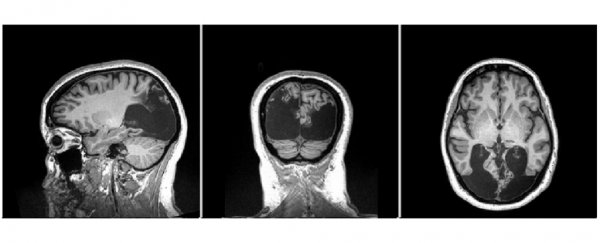Scientists have created the most extensive brain map to date of a person with an extremely rare form of blindness. To Milena Canning, objects are invisible - unless they are moving.
Canning, who is 48 and hails from Scotland, wasn't born blind. She was left without sight 18 years ago after a respiratory infection, a series of strokes, and an 8-month coma.
About six months after emerging from the coma was the first time she reported seeing something - the reflections glinting off a metallic gift bag, like fireworks.
She visited opthamologist Gordon Dutton in Glasgow two years after the initial incident, and noted that she had no useful vision - but then was able to mirror his arm movements, and name the colours of large moving objects.
"She can see rainwater running down a window but cannot see through it," Dutton wrote in a 2003 paper.
"When her daughter is walking away from her, she can see her daughter's pony tail moving from side to side but cannot see her daughter. She can see the movement of the water going down the plug hole but she cannot see her child in the bath."
He recommended that she use a rocking chair to enhance her vision, and she learned to move her head from side to side in order to see what was in front of her. But her condition was still a mystery, so Dutton referred her to Western University's Brain and Mind Institute in London, Canada.
There, neuropsychologist Jody Culham and a team of researchers performed a series of tests and conducted an analysis, including a full fMRI scan of Canning's brain.
They concluded that Canning has something called Riddoch syndrome, or the Riddoch phenomenon, also known as statokinetic dissociation - where someone who is otherwise blind can see moving objects.
The condition is caused by lesions in the occipital lobe, the region of the brain responsible for processing vision. The opposite condition, wherein the patient can only see stationary objects, also exists: it's called akinetopsia.
"She is missing a piece of brain tissue about the size of an apple at the back of her brain - almost her entire occipital lobes," Culham said.
"In Milena's case, we think the 'super-highway' for the visual system reached a dead end. But rather than shutting down her whole visual system, she developed some 'back roads' that could bypass the super-highway to bring some vision - especially motion - to other parts of the brain."
The team found that Canning was able to see a ball rolling towards her and catch it accurately, and also navigate around chairs; but that her ability to identify colours was inconsistent, and she could only accurately tell whether someone's hand in front of her was thumbs-up or thumbs-down half the time.
It seems that her brain has re-wired its visual processing, retaining what it could; in this case, that's motion perception.
It's a case that provides remarkable insight into brain plasticity, joining a growing body of evidence that human and animal brains are capable of widespread rewiring when damaged.
"This work may be the richest characterisation ever conducted of a single patient's visual system. She has shown this very profound recovery of vision, based on her perception of motion," Culham said.
"Patients like Milena give us a sense of what is possible and, even more importantly, they give us a sense of what visual and cognitive functions go together."
The research has been published in the journal Neuropsychologica.
